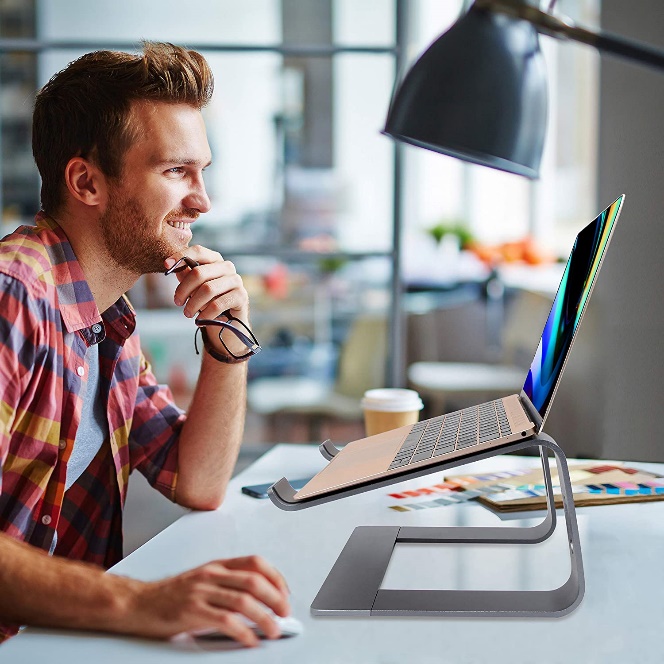Learning is one of the most important factors shaping skills, knowledge and adaptability among the workforce.
For a long time, the traditional methods of learning – class lecture sessions in combination with printed materials and face-to-face training seminars have provided foundations for corporate education. Though these approaches do possess some advantages, they seldom satisfy the constantly changing requirements of modern day employees.
This blog highlights 5 powerful methods that improve employees’ learning process in a working environment. If you are an experienced human resource manager or a team leader, these approaches will appear quite practical and transformative for the functioning of your organization.
1. Technology Integration
 The adoption of enterprise LMS software like iTacit lays a foundation for a more agile and responsive learning environment. Modern technological tools help make learning more engaging and increase the ability of learners to retain knowledge. E-Learning platforms offers the following advantages and more:
The adoption of enterprise LMS software like iTacit lays a foundation for a more agile and responsive learning environment. Modern technological tools help make learning more engaging and increase the ability of learners to retain knowledge. E-Learning platforms offers the following advantages and more:
Flexibility and Accessibility
E-learning platforms provide the flexibility for employees to engage with learning materials at their own pace and convenience, breaking free from the constraints of traditional schedules.
Multimedia-rich Content
Leveraging multimedia elements such as videos, animations, and interactive quizzes makes learning more engaging and caters to diverse learning styles.
Real-time Progress Tracking
E-learning platforms often come equipped with features that allow organizations to track learners' progress in real-time, enabling timely intervention and support.
2. Personalized Learning Paths
Personalization of learning paths is paramount to enhancing the enterprise learning process. This strategy personalizes the learning process for each employee ensuring that everyone’s preferences are well catered for. Take note of the following importance of personalized learning paths:
Caters to Diverse Learning Styles
 Individuals have varying learning preferences, and personalized learning paths accommodate these differences by delivering content in formats that resonate with each learner's preferred style.
Individuals have varying learning preferences, and personalized learning paths accommodate these differences by delivering content in formats that resonate with each learner's preferred style.
Conducting initial assessments helps identify existing skill levels and knowledge gaps. Personalized learning paths can then be designed to bridge these gaps and advance individuals at an optimal pace.
AI-Driven Personalized Learning Solutions
Learning modules that self-adapt to align with a learner’s level is important to keep learners engaged. AI-driven systems can predict areas where individuals might struggle based on historical data, allowing proactive measures to be taken to enhance comprehension.
Feedback and Recognition
Instantaneous performance feedback regarding assessments and skill improvement is provided by personalized learning platforms. This encourages individuals to partake actively in the learning process.
3. Gamification
With gamification,training sessions are turned into exciting playgrounds where learners enjoy themselves while competing and learning. Gamification helps to improve motivation, engagement and memory retention. Some of the benefits of incorporating unique learning experiences are:
Enhanced Engagement
 Gamification creates a fun learning environment. The introduction of friendly competition and cooperative aspects helps to promote a spirit of solidarity among learners which increases the level of engagement.
Gamification creates a fun learning environment. The introduction of friendly competition and cooperative aspects helps to promote a spirit of solidarity among learners which increases the level of engagement.
Improved Retention and Recall
Gamified learning often involves challenges, quizzes, and simulations that require active decision-making.
This increases the rate at which learners retain information and makes it easier to remember. Positive reinforcement is provided as within the game there are rewards and recognition for achievements, reinforcing learned concepts.
Gamification in Enterprise Training
Leaderboards and Badges
The use of leaderboards emphasizes both individual and team accomplishments. It encourages healthy competition among the employees thereby pushing them to deliver their best. Social accomplishment badges generate a sense of appreciation along the learning journey.
Scenario-based Simulations
Gamified scenarios simulate real-world situations, allowing employees to apply theoretical knowledge in a risk-free environment. Scenario-based simulations pose challenges in order to encourage critical thinking and problem-solving skills.
Reward Systems and Progress Unlocking
Implementing a reward system for completing modules or achieving specific goals incentivizes continuous learning and progression. With their progressive learning paths containing unlockable content, learners are driven by curiosity and a sense of accomplishment to find out more.
4. Continuous Learning Culture
Continuous learning culture creates an atmosphere where workers are motivated and guided toward acquiring new knowledge. After all, nothing worthwhile comes easy. Apply these strategies to encourage continuous learning culture within an organization:
Learning Resources Accessibility
Ensuring easy access to a variety of learning resources, both formal and informal, enables employees to explore topics of interest and relevance to their roles.
Manage Resistance to Change
It is normal for individuals to get stuck with the old order and resist new things. However, leaders within an organization must help the adoption process. This can be done by communicating the long-term effects on individual and organizational success.
Learning Paths Need to be Inclusive and Accessible
The provision of learning initiatives that resonates with multiple learning styles and preferences ensures inclusivity which enables members to continue receiving knowledge.
5. Collaboration and Social Learning
Collaboration and social learning brings a community-oriented approach to the enterprise learning process. This technique emphasizes the importance of interactions, discussions, and shared insights among employees.
Here’s how to leveraging social platforms for collaborative learning:
Build a Community of Learners
 Implementing online forums and discussion groups encourages employees to share their expertise, insights, and challenges, creating a community of learners. Learning peer-to-peer enables employees to learn from each other's experiences and perspectives.
Implementing online forums and discussion groups encourages employees to share their expertise, insights, and challenges, creating a community of learners. Learning peer-to-peer enables employees to learn from each other's experiences and perspectives.
Utilize Collaboration Tools
Integration of collaboration tools such as shared documents, virtual whiteboards, and video conferencing platforms facilitates real-time collaboration, making learning a dynamic and interactive experience.
Apart from this, creating learning teams based on projects or specific objectives promotes collaboration and gives employees the opportunity to share their strengths within a workgroup.
Set Up Mentoring Programs
When experienced workers are allowed to exchange ideas with new employees, a mutually beneficial learning relationship is created.
Through such conversational behaviors, especially between individuals of different generation groups in the workforce enhances cross-generation learning to provide a variety perspectives
Conclusion
The enterprise learning landscape is subject to ongoing changes, driven by AI and Machine Learning. Understanding and adopting these trends will put the organizations on a strong footing to dominate in the global market.
The bottom line is that learning should not be uniform. It should be interactive, customized and entertaining. Learning is not only about teaching, it’s also about inspiring others, adjusting oneself and every one moving forward together.






